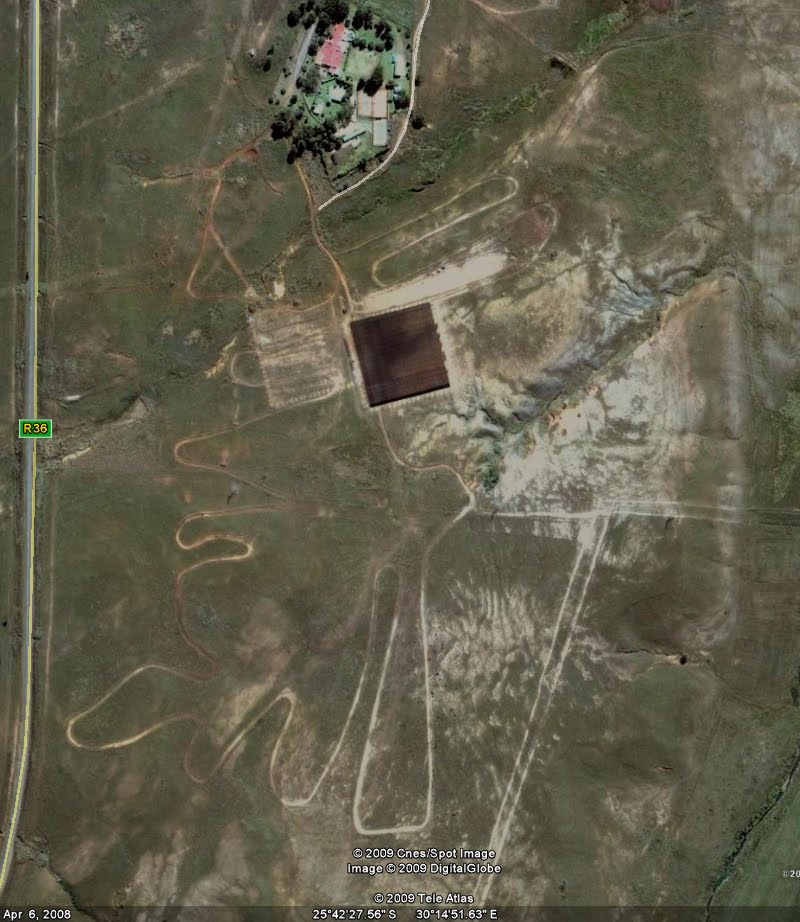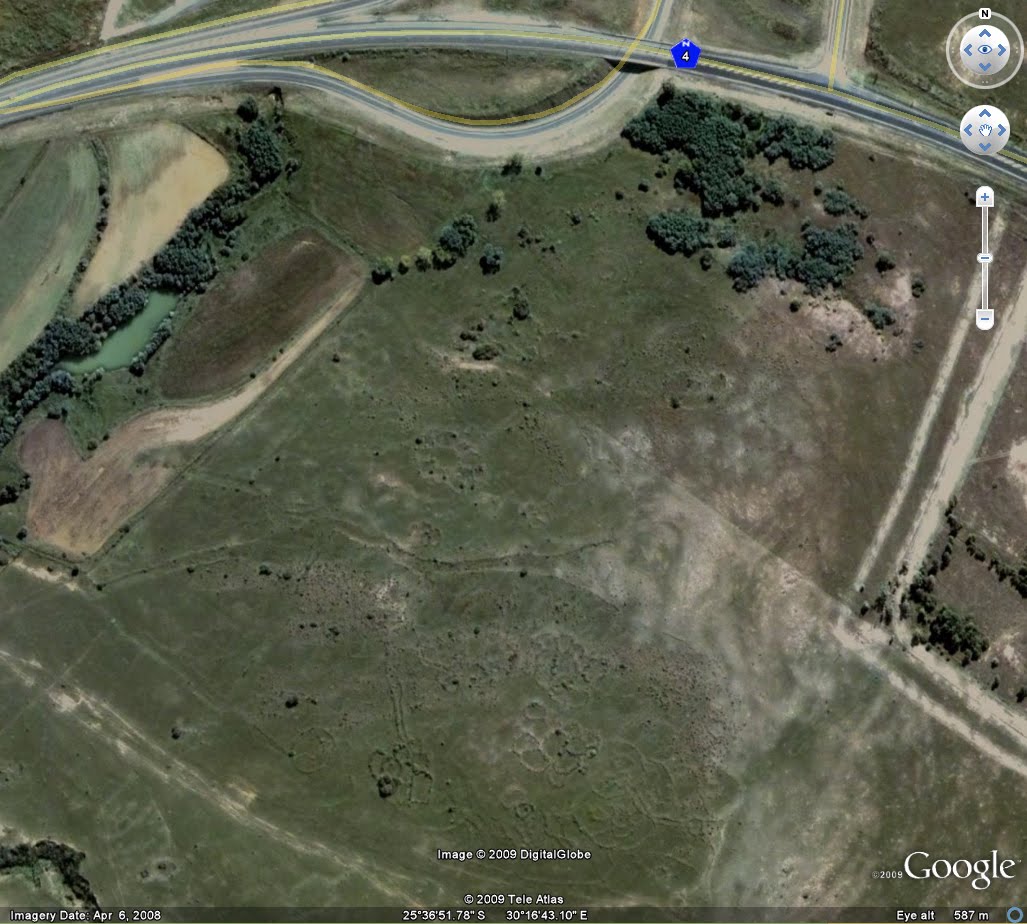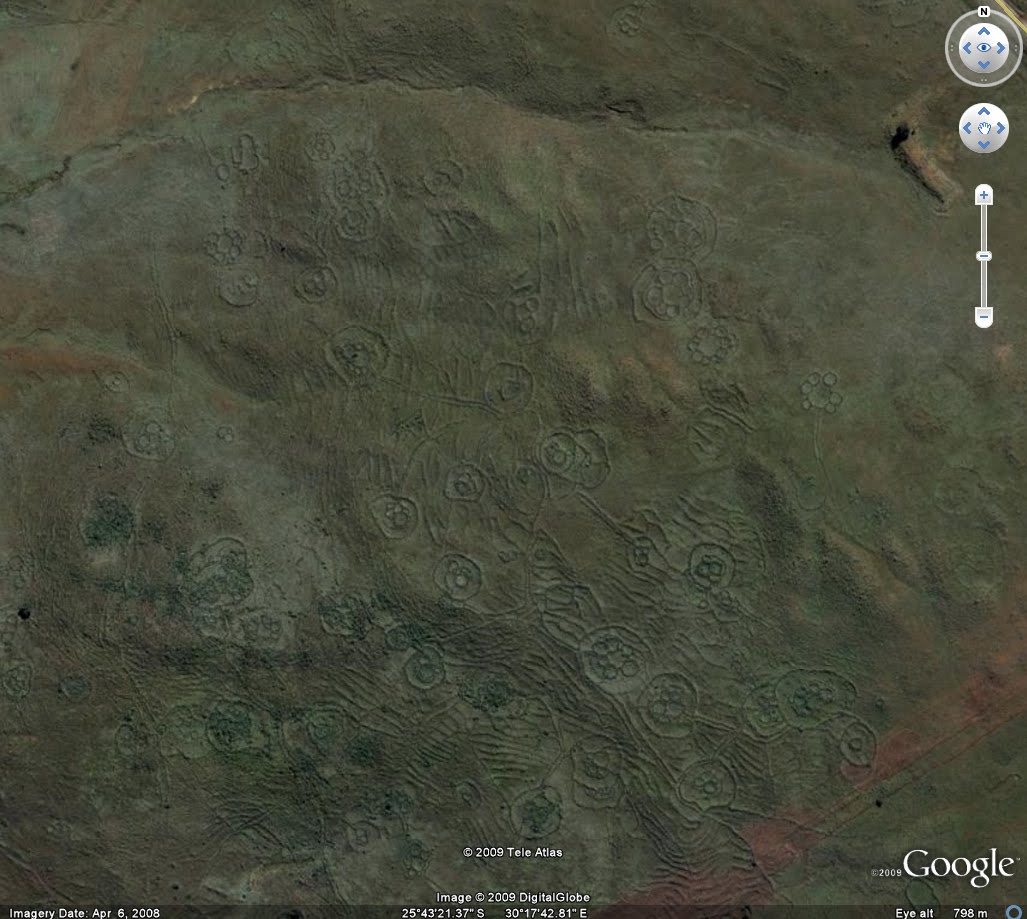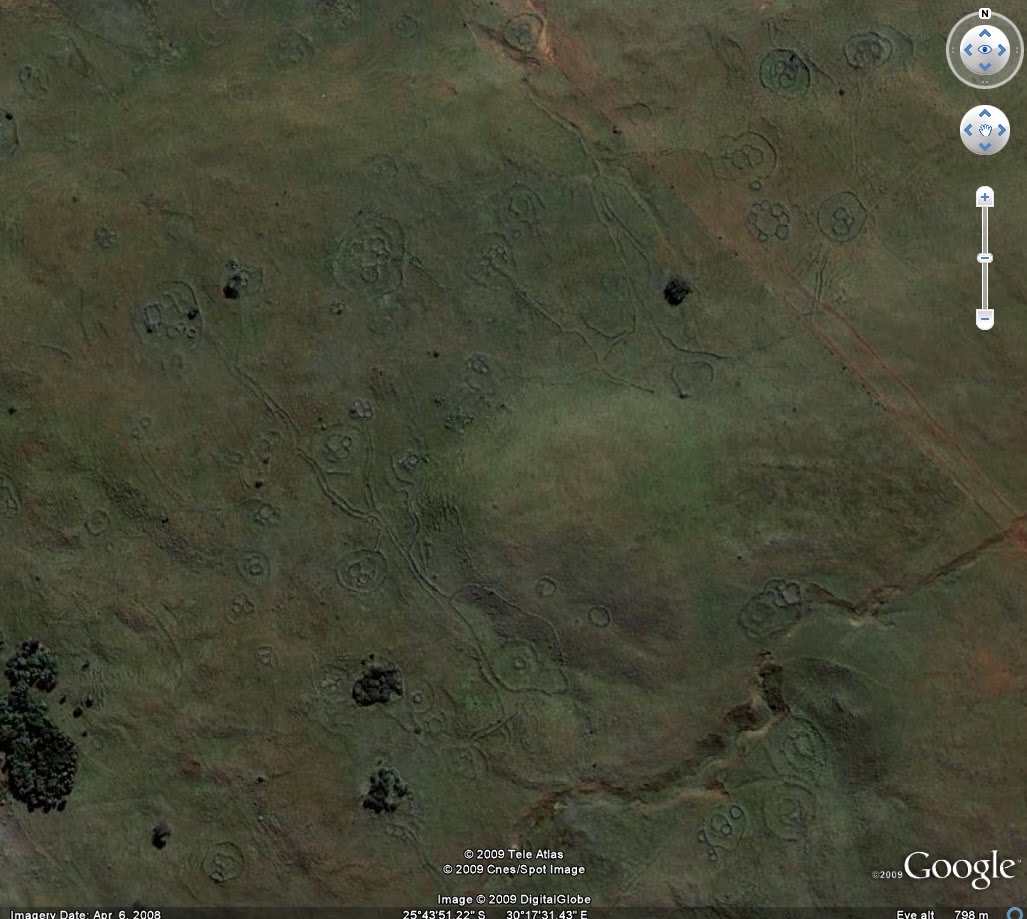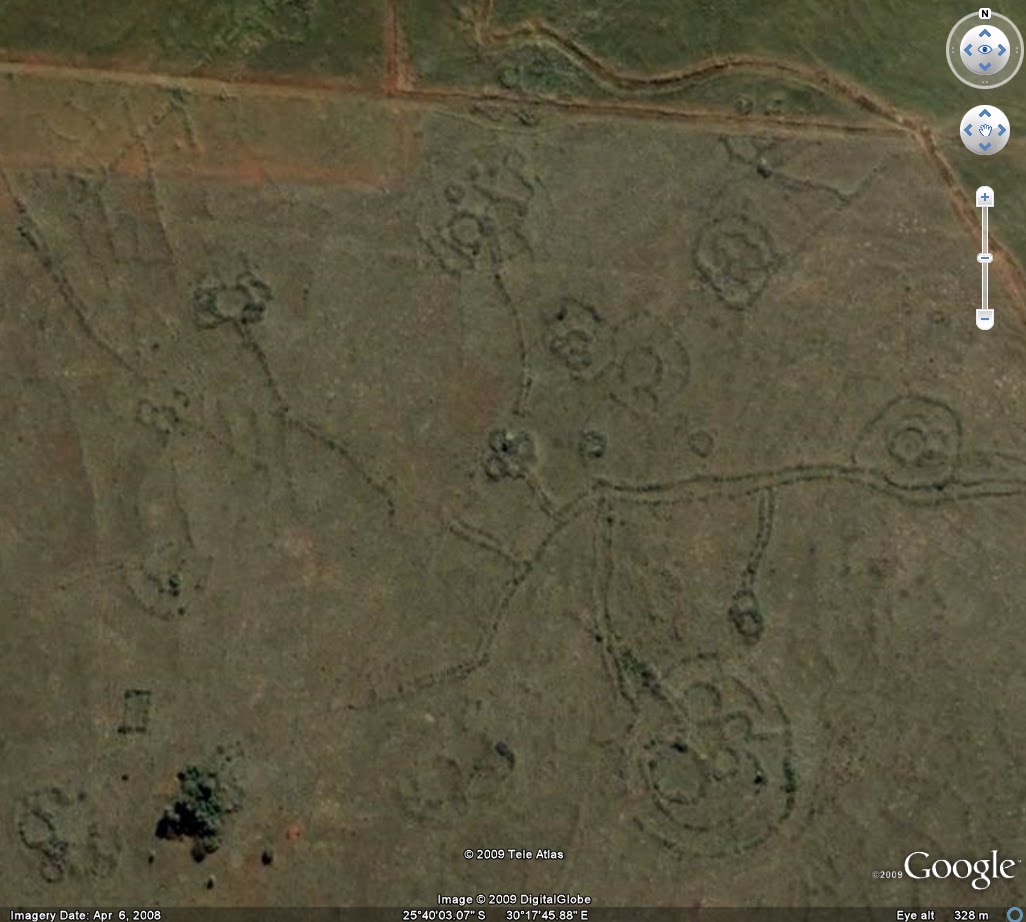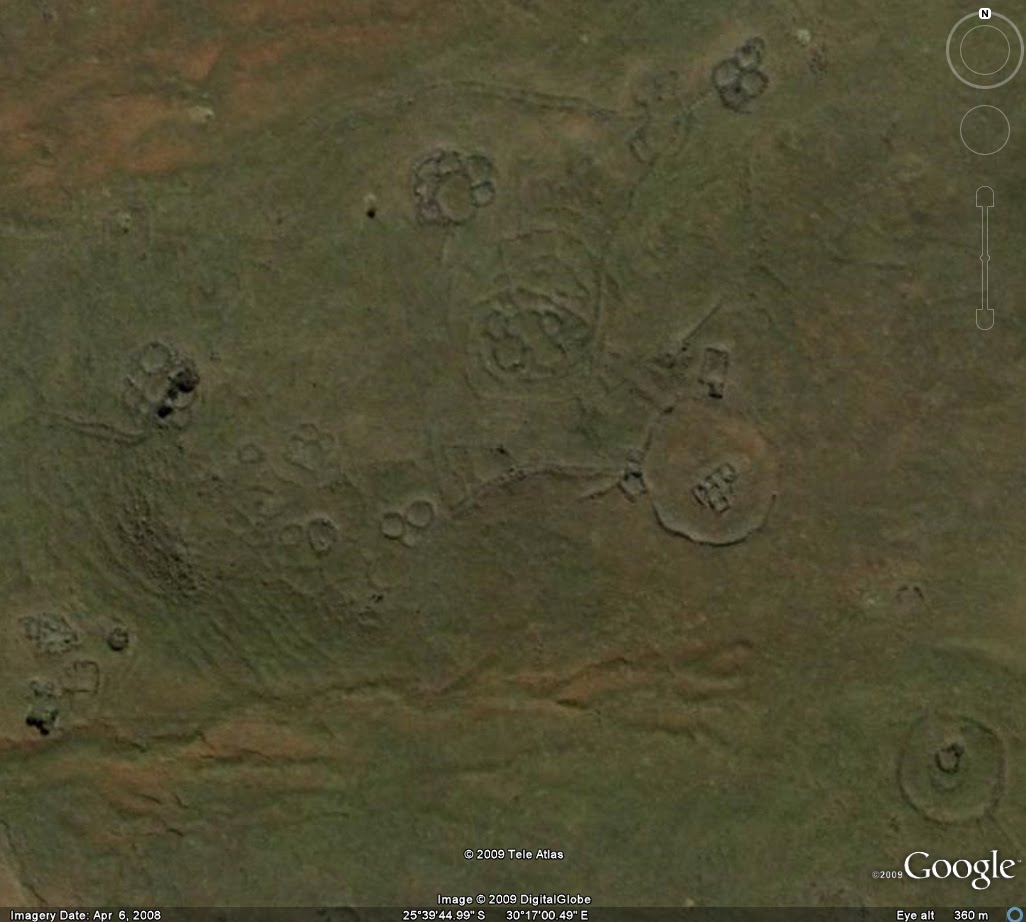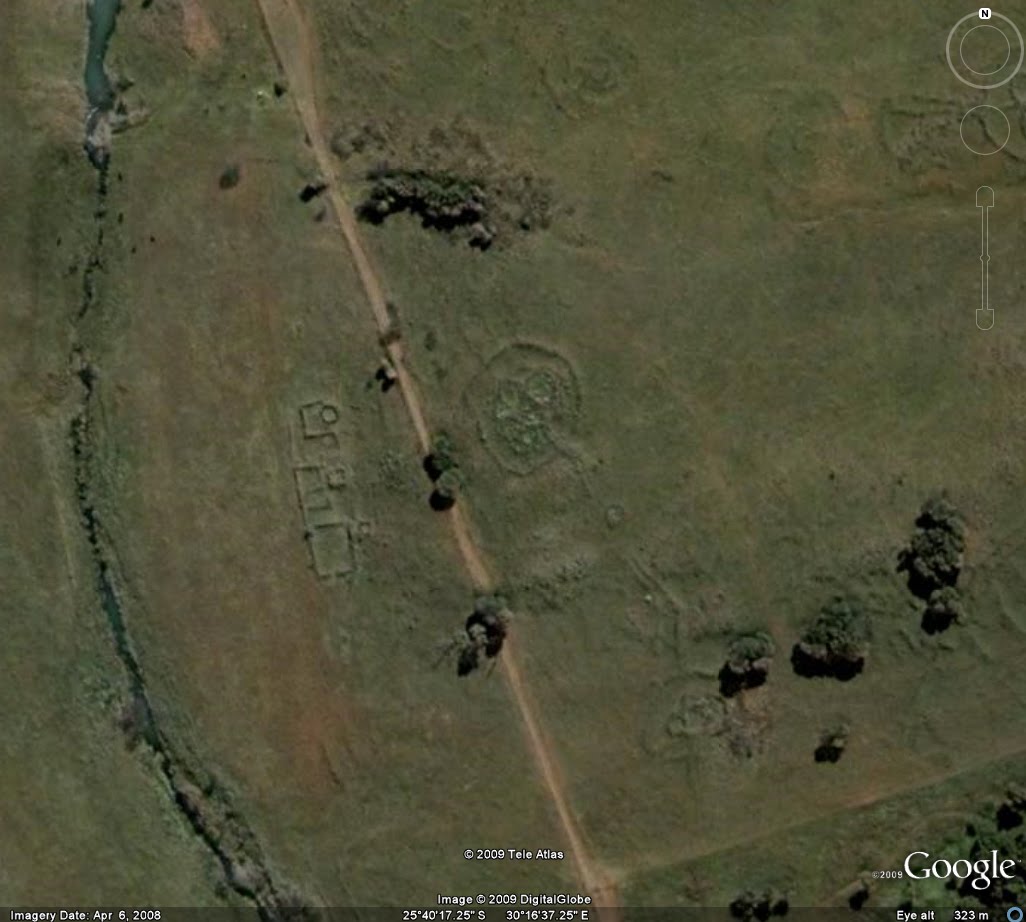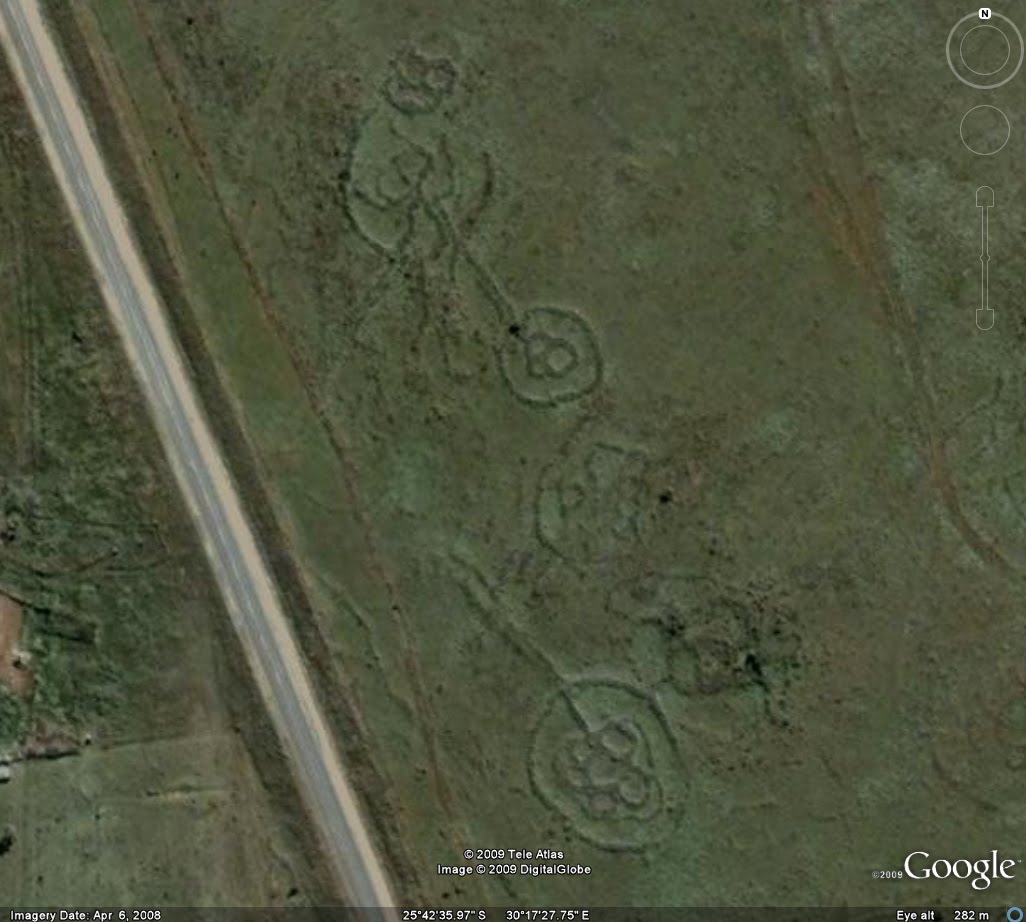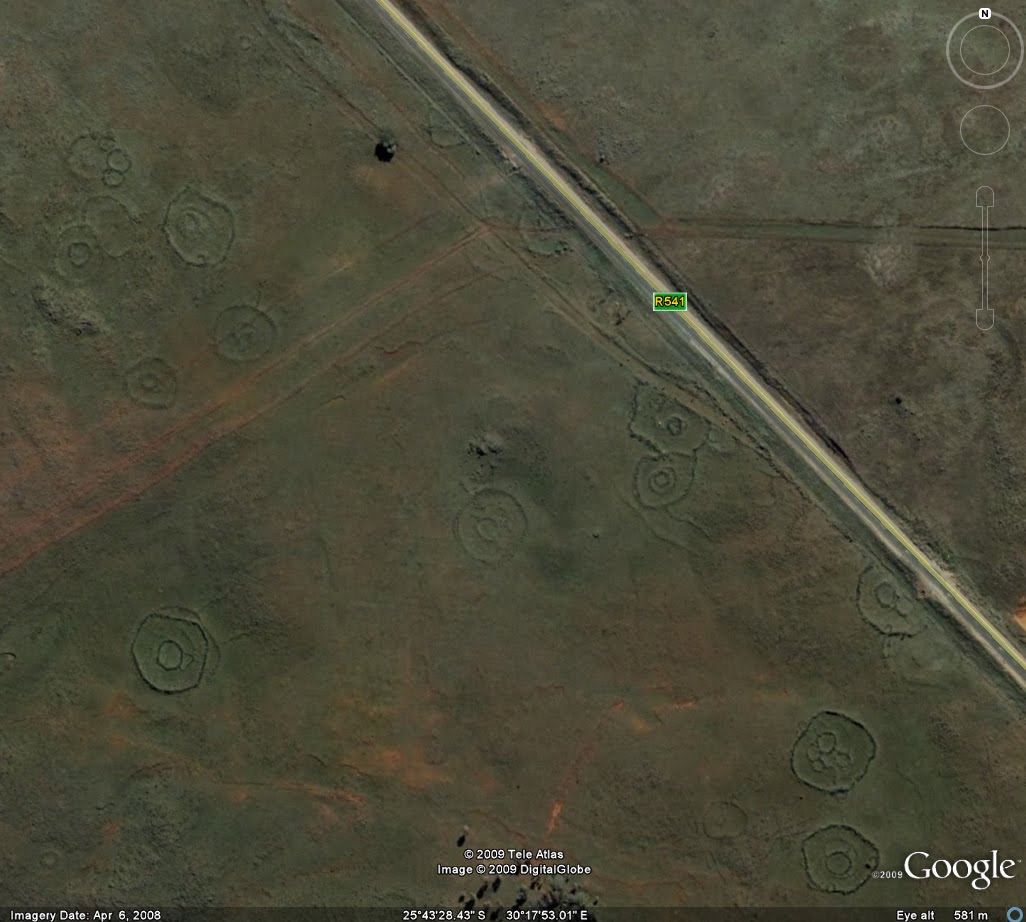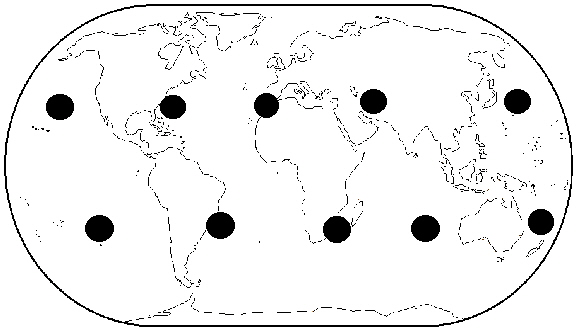I found something very interesting online today. I'm just going to supply the link here, instead of copying the whole lot in here.
http://www.viewzone.com/adamscalendar.html
I went to Google Earth and took a screen capture. The area is really big. If you go to Machadodorp on Google Earth (type it into the area field) and then just move South to Emthonjeni, and then just slightly SSE from Emthonjeni, you'll find it. It's quite astonishing that they estimate these ruins at 160,000 to 200,000 BCE.
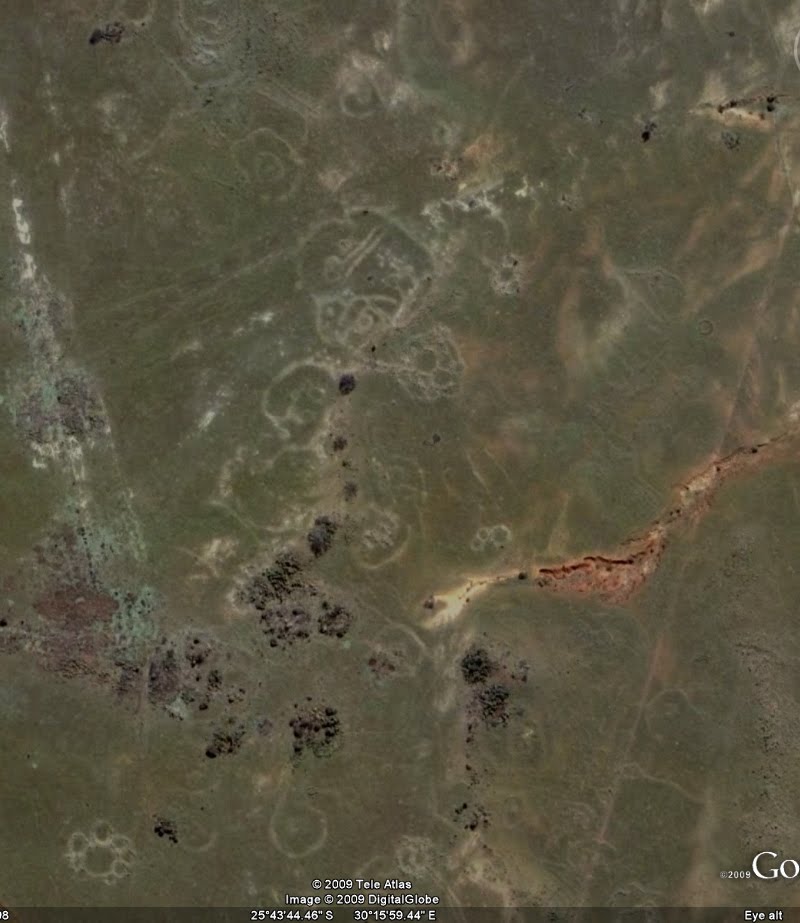
A short excerpt from the site:
South Africa has long been regarded as the Cradle of Humankind, but it looks like just a tiny fraction has been discovered up to now.
Now I'm actually wondering about a lot of things which might be connected.
• I'm reminded of the original meaning of the word Zulu, which means 'people of the stars' according to Credo Mutwa.
• I've done some presentations for Limpopo Province tourism in the past, and learned about Mapungubwe, an ancient kingdom right on the border with Zimbabwe.

Mapungubwe is most well known for this famous gold foil rhinoceros which was excavated there.

• And then, as you can see, the Zimbabwe ruins is just North of Mapungubwe, so I'm wondering how far North this civilization actually stretched, and if it was a series of kingdoms.
What seems to be evident, is that gold was central to their existence.
http://www.viewzone.com/adamscalendar.html
I went to Google Earth and took a screen capture. The area is really big. If you go to Machadodorp on Google Earth (type it into the area field) and then just move South to Emthonjeni, and then just slightly SSE from Emthonjeni, you'll find it. It's quite astonishing that they estimate these ruins at 160,000 to 200,000 BCE.

A short excerpt from the site:
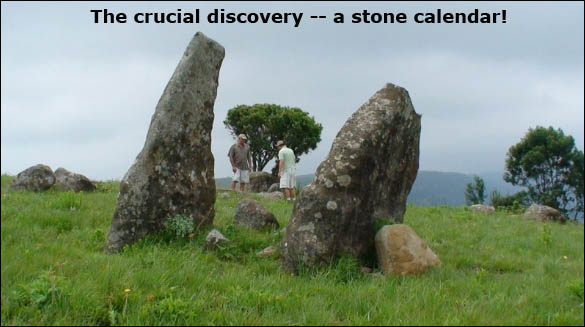
Dating the site:
Finding the remains of a large community, with as many as 200,000 people living and working together, was a major discovery in itself. But dating the site was a problem. The heavy patina on the rock walls suggested the structures were extremely old, but the science of dating patina is just being developed and is still controversial. Carbon-14 dating of such things as burnt wood introduces the possibility that the specimens could be from recent grass fires which are common in the area.
The breakthrough came quite unexpectedly. As Tellinger describes it:
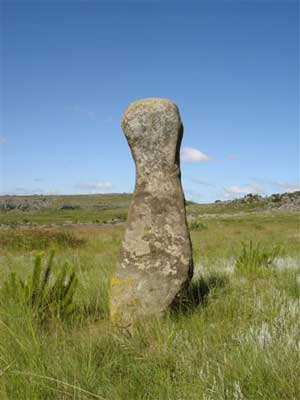
"Johan Heine discovered Adam's Calendar in 2003, quite by accident. He was on route to find one of his pilots who crashed his plane on the edge of the cliff. Next to the crash site Johan noticed a very strange arrangement of large stones sticking out of the ground. While rescuing the injured pilot from about 20 metres down the side of the cliff, Johan walked over to the monoliths and immediately realised that they were aligned to the cardinal points of Earth -- north, south, east and west. There were at least 3 monoliths aligned towards the sunrise, but on the west side of the aligned monoliths there was a mysterious hole in the ground -- something was missing.
After weeks and months of measuring and observations, Johan concluded that it was perfectly aligned with the rise and fall of the Sun. He determined the solstices and the equinoxes. But the mysterious hole in the ground remained a big puzzle. One day, while contemplating the reason for the hole, the local horse trail expert, Christo, came riding by. He quickly explained to Johan that there was a strange shaped stone which had been removed from the spot some time ago. Apparently it stood somewhere near the entrance to the nature reserve.
After an extensive search, Johan found the anthropomorphic (humanoid shape) stone. It was intact and proudly placed with a plaque stuck to it. It had been used by the Blue Swallow foundation to commemorate the opening of the Blue Swallow reserve in 1994. The irony is that it was removed from the most important ancient site found to date and mysteriously returned to the reserve -- for slightly different reasons.
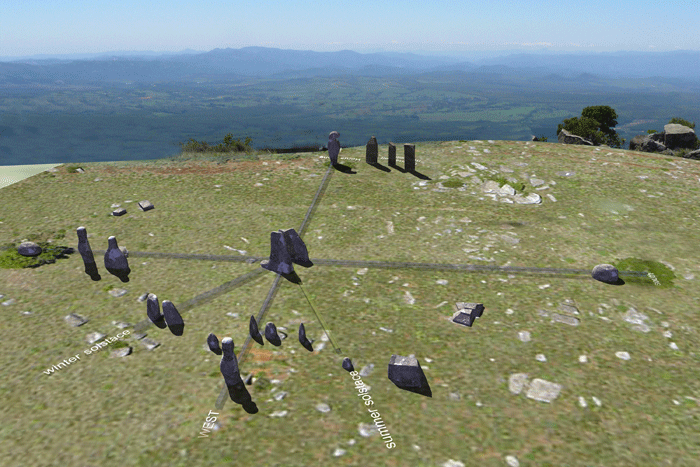
The exact location of the calendar is listed on http://www.makomati.com/. The first calculations of the age of the calendar were made based on the rise of Orion, a constellation known for its three bright stars forming the "belt" of the mythical hunter.
The Earth wobbles on its axis and so the stars and constellations change their angle of presentation in the night sky on a cyclical basis. This rotation, called the precession completes a cycle about every 26,000 years. By determining when the three stars of Orion's belt were positioned flat (horizontal) against the horizon, we can estimate the time when the three stones in the calendar were in alignment with these conspicuous stars.

The first rough calculation was at least 25,000 years ago. But new and more precise measurements kept increasing the age. The next calculation was presented by a master archaeoastronomer who wishes to remain anonymous for fear of ridicule by the academic fraternity. His calculation was also based on the rise of Orion and suggested an age of at least 75,000 years. The most recent and most acurate calculation, done in June 2009, suggests an age of at least 160,000 years, based on the rise of Orion -- flat on the horizon -- but also on the erosion of dolerite stones found at the site.
Some pieces of the marker stones had been broken off and sat on the ground, exposed to natural erosion. When the pieces were put back together about 3 cm of stone had already been worn away. These calculation helped assess the age of the site by calculating the erosion rate of the dolerite.
South Africa has long been regarded as the Cradle of Humankind, but it looks like just a tiny fraction has been discovered up to now.
Now I'm actually wondering about a lot of things which might be connected.
• I'm reminded of the original meaning of the word Zulu, which means 'people of the stars' according to Credo Mutwa.
• I've done some presentations for Limpopo Province tourism in the past, and learned about Mapungubwe, an ancient kingdom right on the border with Zimbabwe.

Mapungubwe is most well known for this famous gold foil rhinoceros which was excavated there.

• And then, as you can see, the Zimbabwe ruins is just North of Mapungubwe, so I'm wondering how far North this civilization actually stretched, and if it was a series of kingdoms.
What seems to be evident, is that gold was central to their existence.

